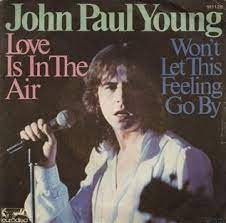Critical Reflection
Theft on 32nd is a short film about two men who decide to rob a house to make ends meet. Django and Marty are struggling financially, and their desperation leads them to commit crimes. The film portrays the struggles of lower-income individuals and highlights the social issues surrounding poverty and lack of access to healthcare. In this evaluative essay, I will analyze how Theft on 32nd represents social groups and issues, how the elements of production work together to create branding, how the film engages with the audience, and how research informs the products. Theft on 32nd represents the social issues surrounding poverty and lack of access to healthcare. Django's wife needs chemotherapy, and the couple cannot afford the bills. This means the struggles of individuals who do not have access to healthcare and must resort to desperate measures to pay for medical expenses. The film also portrays the struggles of lower-income individuals who cannot make ends meet, a prevalent issue in many societies. The characters struggle to survive, and their desperation leads them to commit crimes. In the film, the Jetson family is shown to have a lot of wealth and privilege. The contrast between the Jetsons and the two protagonists highlights society's social and economic disparities. This disparity is further emphasized when the two protagonists are caught and arrested while the Jetsons continue to enjoy their wealth and privilege.
The production elements in Theft on 32nd create a sense of branding. The film is shot in a gritty, dark style, which adds to the tension and desperation of the characters. The use of close-up shots and fast cuts creates a sense of urgency and panic. The soundtrack is also essential in creating the overall tone of the film. The use of ominous music adds to the tension and suspense. The lighting is also used effectively to develop a sense of atmosphere. The production elements combine to create a cohesive and compelling brand. The film's branding is unique and memorable, conveying the characters' desperation and urgency. Theft on 32nd engages with the audience by creating an emotional connection with the characters. The audience is invested in Django's struggle to pay for his wife's chemotherapy, which makes empathy for the character. The tension and suspense of the film also engage the audience by keeping them on the edge of their seats. The emotion that the audience might feel while watching the film is one of tension and empathy. The audience is rooting for the characters to succeed, but at the same time, they know that what they are doing is wrong. After the film, the audience might feel a sense of unease and moral conflict, as the characters are not portrayed as simple heroes or villains. The film raises important questions about poverty, healthcare, and desperation, encouraging the audience to think critically. The research that informed Theft on 32nd was focused on the social issues surrounding poverty and lack of access to healthcare. The film challenges the convention of portraying characters as simple heroes or villains. Instead, the film shows the characters as complex individuals who are struggling to survive. The use of close-up shots and fast cuts is a convention of crime thrillers, but the film uses these elements to create a sense of urgency and panic rather than to glamorize the crime. The film also challenges the convention of portraying wealthy individuals as heroes, as the Jetsons are shown to be rich but are not portrayed sympathetically.
Overall, the research informed the film by creating a realistic portrayal of the social issues surrounding poverty and lack of access to healthcare. The film highlights society's social and economic disparities, an important issue that must be addressed. Theft on 32nd raises essential questions about poverty, healthcare, and desperation, encouraging the audience to think critically about these issues. Society must address these issues and find solutions to help those struggling financially and who cannot afford healthcare. In conclusion, Theft on 32nd is a well-crafted short film that effectively represents social groups and issues, creates a sense of branding, engages with the audience, and challenges conventions. The film highlights the struggles of lower-income individuals, the social and economic disparities in society, and the lack of access to healthcare. The use of close-up shots, fast cuts, and ominous music creates a sense of urgency and tension, which keeps the audience engaged. The emotional connection that the audience feels towards the characters creates empathy and encourages critical thinking about these crucial issues. Overall, Theft on 32nd is a powerful film that raises important questions and encourages the audience to think critically about societal social, and economic inequalities.
In addition to the social issues highlighted in Theft on 32nd, the film also portrays the emotional toll that financial struggles and desperation can have on individuals. Django and Marty's decision to commit a crime is not taken lightly, and the film depicts the internal conflict and moral dilemmas they face. This adds depth to the characters and allows the audience to see them as complex individuals with their own struggles and motivations.
The production elements in Theft on 32nd, such as the gritty and dark style of the film, the use of close-up shots and fast cuts, and the ominous music, all work together to create a cohesive branding that effectively conveys the urgency and tension of the characters' situation. The visual and auditory elements are carefully crafted to immerse the audience in the story and evoke emotions that enhance their engagement with the film.
Furthermore, Theft on 32nd engages with the audience by presenting relatable characters that elicit empathy and understanding. The audience can connect with the characters' struggles, as financial difficulties and lack of access to healthcare are issues that many people can relate to on a personal level. This emotional connection draws the audience into the story and encourages them to reflect on the societal problems portrayed in the film.
The research that informed Theft on 32nd is evident in the film's realistic portrayal of the social issues surrounding poverty and healthcare access. The film does not shy away from portraying the harsh realities that many individuals face, and it challenges conventions by presenting a nuanced and multi-dimensional view of the characters and their circumstances. The film encourages the audience to reflect critically on the complexities of these social issues and the need for systemic change.
In conclusion, Theft on 32nd is a thought-provoking short film that effectively represents social issues, creates compelling branding, engages with the audience, and is informed by thorough research. Through its portrayal of complex characters, its production elements, and its engagement with societal issues, the film prompts the audience to reflect on the challenges faced by lower-income individuals, the social disparities in society, and the need for change. Theft on 32nd is a powerful piece of storytelling that prompts meaningful conversations and encourages critical thinking about social and economic inequalities.




Comments
Post a Comment